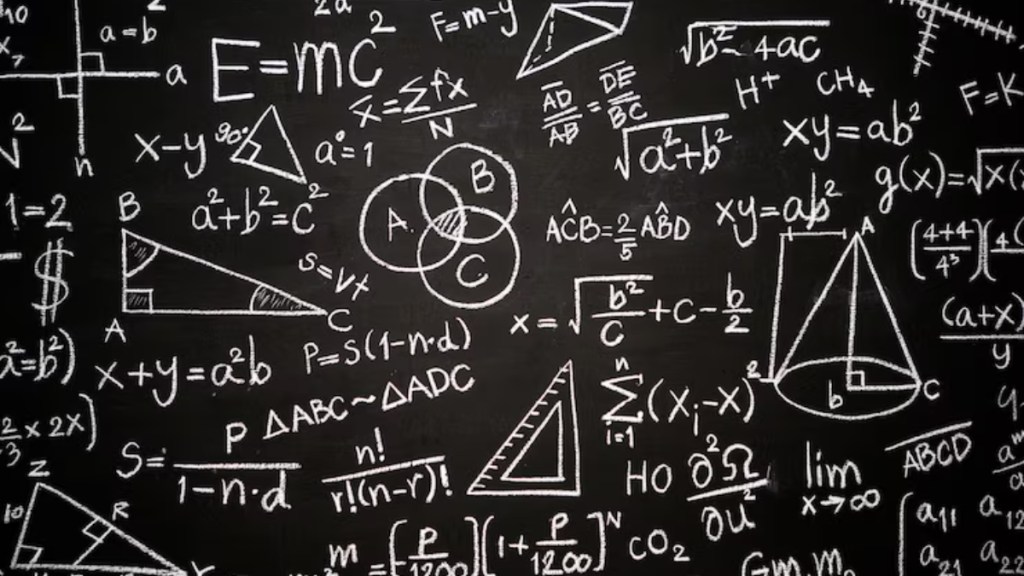By Pushkarni Panchamukhi and Sahil Mehra
Noted Economist Prof. Ha-Joon Chang, who teaches at Cambridge University, said “95% of economics is common sense – made to look difficult, with the use of jargon and mathematics”. This statement almost puts economics to shame as it prides itself as the most exact science among all social sciences. Putting aside and leaving behind the historical, sociological and even the political dimensions to understanding the working of an economy, mathematics has emerged as the most prominent and dominant influence on economics. It was during the late 19th century that economists, most of them trained in natural sciences, like Jevons, Walras and Fisher, desired to ‘uplift’ the stature of economics to make it into ‘hard’ science like physics. They brought mathematical tools like calculus – from measuring the trajectory of the moon or a falling apple to describing the behaviour of individuals in an economy.
Since its humble beginnings, the application of mathematics in economics has evolved and can be broadly categorised into two uses; one, is the descriptive mathematics and statistics, and; second, mathematical modelling. Descriptive mathematical and statistical tools like, calculating averages, variations in data, matrix algebra (for relations between different sectors of the economy), and probability are essential for any analysis that involves or is dependent upon empirics. It ranges from the knowledge of simple calculations like GDP, consumer price index, inflation rates, present discount values, etc., that enrich our understanding of these concepts, to comparative calculations of yields and returns, budgeting, making sense of public finance, etc., along with hands-on practice on various data softwares like R, STATA, E-Views, SPSS, etc., which enhances analytical proficiency. These tools help us in describing the data at hand and draw certain conclusions and implications for a broader level of understanding that is grounded in some economic theory. On the other hand, mathematical modelling is a completely different ball game where, using mathematical language/equations, definite yet elegant models are created as an abstraction and simplification of the real world. Treating these models as benchmarks real economic situations are measured, as deviations from these pristine models.
Most noted universities across the world offer rigorous courses in mathematics at the undergraduate level to award an honours degree in Economics. It is hardly surprising therefore when economics students who already have a foundation in maths or students coming from pure sciences fare far better than those who get nervous seeing numbers or graphs. Yet, whether these graduates will make good economists and be able to analyse the real complex world is a tough question. Much depends on the pedagogical techniques we use in the classroom as economics teachers. Giving prominence to real-life issues and underlining the economic context to the mathematical equations will not only demystify the maths but also highlight the common sense in economics, the multitude of possibilities in human behaviour and therefore the numerous ways to analyse economic situations. Dehumanising economics by, for instance, treating labour only as an input cost in a profit maximising problem and undermining the value of labour or the detrimental effects of unemployment, will give rise to limited perspectives or a fragmented understanding of the economy.
Mathematical economics, a happy coalition of economics and maths, has prominently dominated the work of many nobel laureates. While some have used it as a tool to present elaborate, discursive theories in the form of equations, others such as Gerard Debreu who was a trained mathematician turned economist, have been criticised for developing mathematical models that are unrealistic or irrelevant for policy making. In the words of Nobel laureate, Paul Krugman, “…it is important for your colleagues (and students) to understand how you arrived at your conclusions, partly so that they can look for weak points, partly so that they may find other uses for the technical tricks you used to think an issue through.”
And that is the trick; to use maths as a language to think through economic theories, to present them, to refute them but not get so lost in the grammar of the language that the common sense of economics is lost. As the famous poet Khalil Gibran wrote: “Between what is said and not meant, and what is meant and not said, most of love is lost.”
The author is assistant dean and assistant professor of School of Economics, RV University, Bangalore. Views are personal.

